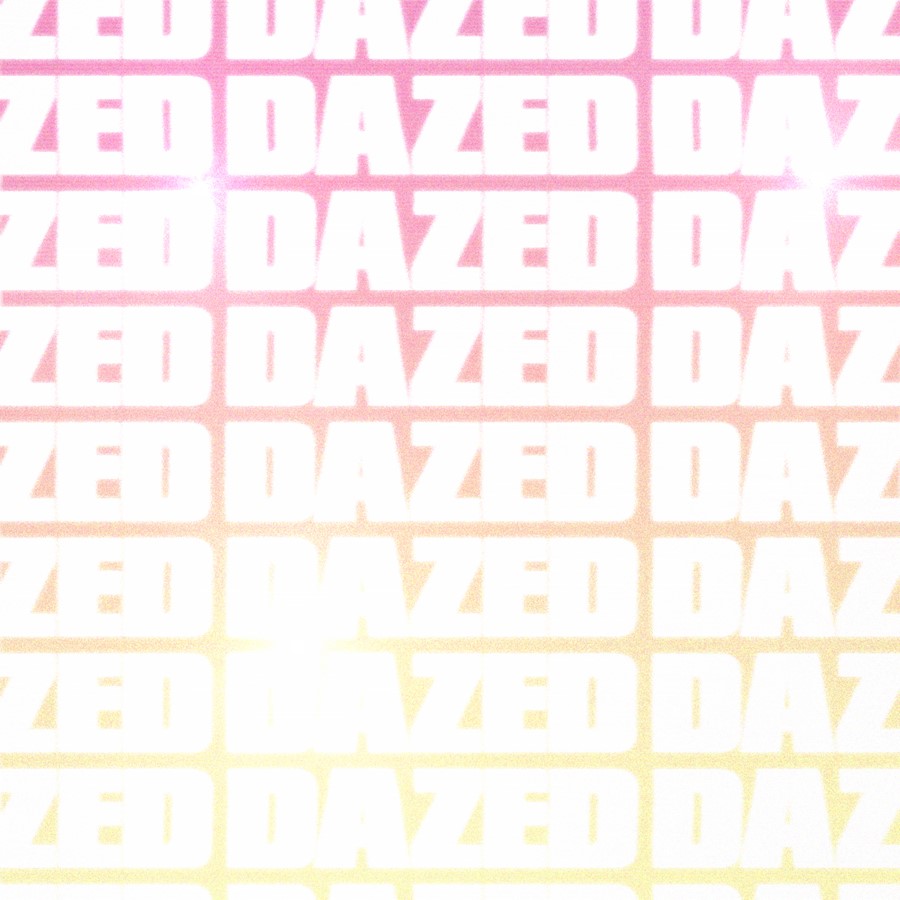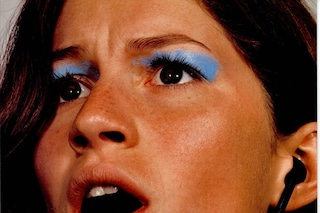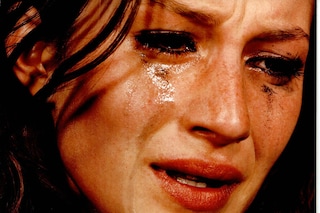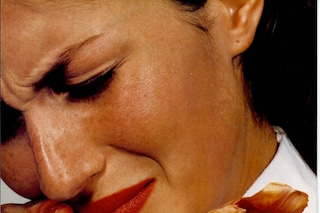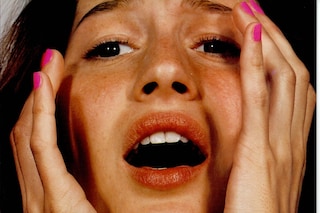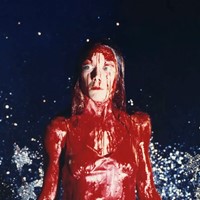‘Perpetually crying’ make-up is the new big beauty trend, characterised by glistening eyes, red cheeks and puffy lips – but where did it come from?
The internet’s latest beauty obsession is weeping. And why not? Everything is a bit shit. Why not romanticise it and find something creative in the sorrow? Presumably, this is why “Crying make-up tutorials” have been taking off on social media: on TikTok, the term has 130 million views and counting, and Google searches have sky-rocketed in the last month. The idea is simple: to make it look like you’ve just been crying by giving yourself smudged eye make-up, puffy lips, a red nose and cheeks, and glistening eyes with glitter eyeliner for a “perpetually crying look”.
Crying make-up tutorials have been around for a while, but enjoyed a resurgence when beauty influencer Zoe Kenealy posted a now-viral tutorial last month. Kenealy says she was inspired by the Korean Beauty trends Douyin and Ulzzang. “For years I have known it is common in Korea to use glitter on the bottom lash line to give the effect that you’ve just finished crying and there is a twinkle in your eye,” she says. “I thought it would be fun to take the look to the next level by adding blush, runny nose and flushed cheeks.” Kenealy knows her tutorial doesn’t actually make you look like you’re crying, and that’s the point. She’s interested in creating new make-up looks and posted the video as a fun on-video experiment.
Marta Mae, co-founder and creative director of Dieux Skin, is a fan of crying make-up tutorials. “It’s campy and funny,” she says. “I think it’s more accessible than other trends.” Mae often posts her real tears online, and even created a separate Instagram account where vulnerability and tender emotions are encouraged. “I agree with the viral videos claiming we look better when/after we cry,” she says. “Crying is nature’s serum and lip plumper and I think crying selfies are a fun exercise for people to explore and express themselves. Also, crying is good for your skin.” Speaking to Dazed earlier this year, Mae joked that Dieux’s Forever Eye Masks are the perfect “crying accessory”. “We encourage crying when you need to.”
Crying online isn’t new (think of the viral “leave Britney alone” video) but the stigma around it is certainly shifting. Supermodel Bella Hadid posted a series of crying selfies on her Instagram at the end of last year and Lizzo posted a crying video on TikTok singing Billie Eilish’s “Happier Than Ever” in the same week. Encouraged by the trending “authentic” approach to social media (hello blurry photo dumps) and more casual apps like TikTok and BeReal, crying content is officially having its moment – but is it actually leading to more vulnerability online?
Crying make-up videos and crying “shitpost” selfies are two separate internet trends, but they both capture the essence of “sad girl beauty” and play into the “soft life” aspiration that’s currently popular. Living a “soft life” encourages taking things at a slower pace, with comfort and low stress (think baking bread from scratch and working less). Brooke DeVard Ozaydinli, creator marketing manager and video lead at Instagram, says that “it’s only natural that this shift towards a softer life means we’re seeing softer make-up trends”. This, says Ozaydinli, can also be political.
“A lot of Black creators have been vocal about choosing the soft life – opting to protect their peace and not strive to be in a constant state of accomplishment,” she says. “There’s been a real effort to break down the ‘strong Black woman’ trope and encourage Black women to claim their softness and vulnerability out loud.” Ozaydinli says we’re moving away from using social media as a highlight reel. “In sharing flaws and low moments, you’re able to build a more meaningful community and relate to other people,” she says. “No one is happy 24/7.”
Sabrina Sade, co-founder and CEO of 4am Skin, says the rise of “sad girl beauty” is a “chicken or the egg scenario”. “Is it Gen Z that is more open and vulnerable that is driving TikTok to be an outlet that reflects their mindset? Or was it TikTok as a format that allowed for the driving of this kind of content, that then allows a safe space to be vulnerable?” she says. Sade herself has posted crying videos while in medical school. “One day I decided to take a selfie video of me crying behind my laptop in front of my messy desk, as a reminder to myself when I was down again that this has happened before, and I got through it,” she says.
@zoekimkenealy #greenscreen crying makeup look tutorial 😅 Can I go as a crying person for Halloween or is that not a thing #cryingmakeup #tearmakeup #cryingeyes #makeupforhalloween ♬ Show Me How (Album V) - Men I Trust
Sade says crying beauty is both an encouragement of vulnerability and an aesthetic trend. “I think in a way there are people that are seeing it as a trend and only making content for that, but I still feel that it has greater impacts to the broader population to say ‘hey it is OK to be vulnerable’,” she says. Sade’s own brand 4am Skin was built on the idea of making vulnerability and messiness chic and aspirational, rejecting the “clean girl” beauty and green juice wellness narrative. “We are trying to reject perfectionism and with that show that being messy, lazy, and even sometimes a bit unhinged is not only OK, but totally normal,” she says.
The internet’s current obsession with crying (real tears and make-up tears) is not going anywhere, nor should it. However, Anne-Catherine Auvray, executive editor at Beautystreams, says that while the trend has “the potential to highlight and democratise certain subjects that are still too taboo today”, we should also be wary of the “capitalisation of sadness”. “Crying make-up is a form of self-expression,” she says. “But crying selfies confront us with a more important question which concerns morality and authenticity. We should wonder if depression is not being exploited for decidedly more commercial purposes, such as the aesthetics of tears.”
As much as we’d like to believe we’re our unfiltered selves on social media, even the anti-curated aesthetic has become its own aesthetic. Also, seeing billionaire celebrities like Nicola Peltz Beckham crying because it’s “Monday” is far from relatable. This, however, does not mean that encouraging softness is not a worthwhile pursuit, opening up a space for actual vulnerability under the safety net of a “trend”. After all, many people have been made to feel too uncomfortable to cry in public – so if others feel at their prettiest after they’ve done so, there’s no reason not to share that with the world.
Join Dazed Club and be part of our world! You get exclusive access to events, parties, festivals and our editors, as well as a free subscription to Dazed for a year. Join for £5/month today.
